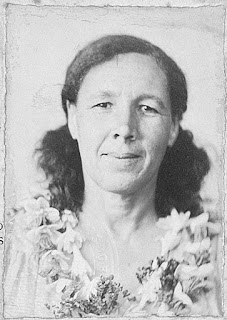Today I continue the blog series titled Following folktales around the world! If you would like to know what the series is all about, you can find the introduction post here. You can find all posts here, or you can follow the series on Facebook!
Cuentos Populares Españoles
José María Guelbenzu
Siruela, 2006.
The book contains 117 Spanish folktales, somewhat re-worded for contemporary readers from their dialects, but kept in their original shape. It is a good selection from all the regions of Spain, including Catalonia and the Basque Country. There are sources in the end, but the tales themselves follow each other without chapters or themes, so it was a surprise every time I turned the page to see what would come next - fairy tale, legend, anecdote, or something else? It is a great, colorful, enjoyable selection with many memorable stories.
Highlights
Right now, just before the holidays, it was nice to read
Aguinaldo, the tale of two poor children who set out to direct the Three Wise Men to their cottage (because the year before they did not get any presents from them). They meet a lady instead, who sends them on an adventurous journey to an enchanted castle. Similarly touching was the story of the
Repentant robbers, in which a holy monk mocked an arrested criminal for being destined to Hell - and then he got a divine reminder that anyone can change for the better if they want to. The tale of
The purest blood also had a timely lesson that a king taught to his mean son - that his blood is the same read as the blood of the poor, and his infant child also looks the same. The Catalan story of the
Green Cap, on the other hand, had a less optimistic message. In it, a witch gave a man a cap that let him hear everyone's thoughts - and he soon concluded that all people are horrible.
One of my favorite stories was
The sewing box of the anjana. A poor woman found the sewing kit of an
anjana (one-eyed witch), and after giving away each pin for a good cause, she was rewarded with help for rescuing her son from a giant. The tale of
The Dwarf also had a female hero, who, after accidentally eloping with the wrong guy, rescued a princess for eternal torture. A long list of other female heroes followed: Three sisters rescued themselves from a giant's
Castle with Seven Towers, and a wife accused of adultery proved her innocence with a pair of
Golden shoes and genius trickery. Dwarves also made other appearances, among them one where a
Sepherd befriended a Dwarf, and they rescued a princess together.
Some well-known tale types took unexpected turns in this book.
The Sleeping Princess was a Sleeping Beauty variant where the girl was awakened by the prince pulling the splinter from her hand (bonus points), but after she got pregnant the prince went home to his wife (minus point). The wife then tried to get rid of the other family by cooking the kids and serving them to her husband (minus points), and while the princess and the prince eventually married, the kids did not come back to life like in other versions.
Angelina and the Lion was a Beauty and the Beast variant where the woman looking for her husband dressed as a soldier, and killed the dragon as a side quest.
The Dragon Prince was saved by a girl who had to make a shirt out of a princess' hair to break his curse - the princess turned out to be his sister in a surprising plot twist. It was also a princess who made herself a
Louse Skin drum and offered a reward to whoever could guess its origins; a man, with the help of some people with superpowers, guessed right, and got a reward (but not the princess).
The ring that said "I'm here" was a classic Cyclops-legend, except here the hero was a clever girl rather than Odysseus.
Some tales ended on a less triumphant note: In
The charcoal burner and Death a mortal tried to trick Death, but Death pretended to hang herself, and tricked the mortal instead by giving him a false sense of triumph. The story of the heroic
Juan y Medio ended when the hero kidnapped a princess, who in turn tricked him with the age-old "tar baby" trick, left him to drown in the ocean, and went home.
Connections
I encountered many of my favorite tale types in this book. There was a version of the Three Gifts story, where the princess wanted
three husbands, but her father insisted that she should choose. When the three princes used their magic objects to save her together, she said "see, all three were needed!", and married all of them.
Lavender Flower was a variant of my favorite Italian Canary Prince, and
Green Rose (Rosa Verde) was a variant of the fiery Mediterranean Basil Maiden. Also Mediterranean is the story of the marriage of
Butterfly and Mouse, which I have encountered in South America before.
The best changeling story I have read so far was that of the
Lost Boy. In it, the husband kept trying to kill the changeling child, but the wife kept stopping him, saying the changeling was just a child, and deserved love. Eventually, the real child was also found, and it turned out that the wife's kindness had broken the spell.
There were many, many classic tale types featured in the book: Tom Thumb (Periquillo), Two Hunchbacks, Thee oranges (here the fairies appeared from the oranges with their children in their arms), Hero who could turn into three animals, Bluebeard (the girl saved herself and her sisters), Three spinners, Puss in Boots, Princess in the shroud, Princess that saw everything, Blacksmith and the devil (or Juan Soldado), Tía Miseria and Death, Animal Bride (here with a frog, helped by her sister who was a snake), Brementown Musicians, Devil's three golden hairs, Raven brothers (here lion brothers), Faithful servant (here the kid stayed dead too), Gold-spitting prince, Stone of Pain and Dagger of Love (I knew this as a Turkish tale), Fortunatus, Girl who turned into a man (specifically so that she could marry into the royal family), Juan el Oso, Extraordinary helpers, Princess who stole magic items from three heroes, Queen bee, Three Little Pigs (with female pigs who built houses together).
As for tricksters,
Juan Bobo and the fox deserve a mention (the latter for the classic down-into-the-well trick she used on the wolf).
Where to next?
Andorra!























































